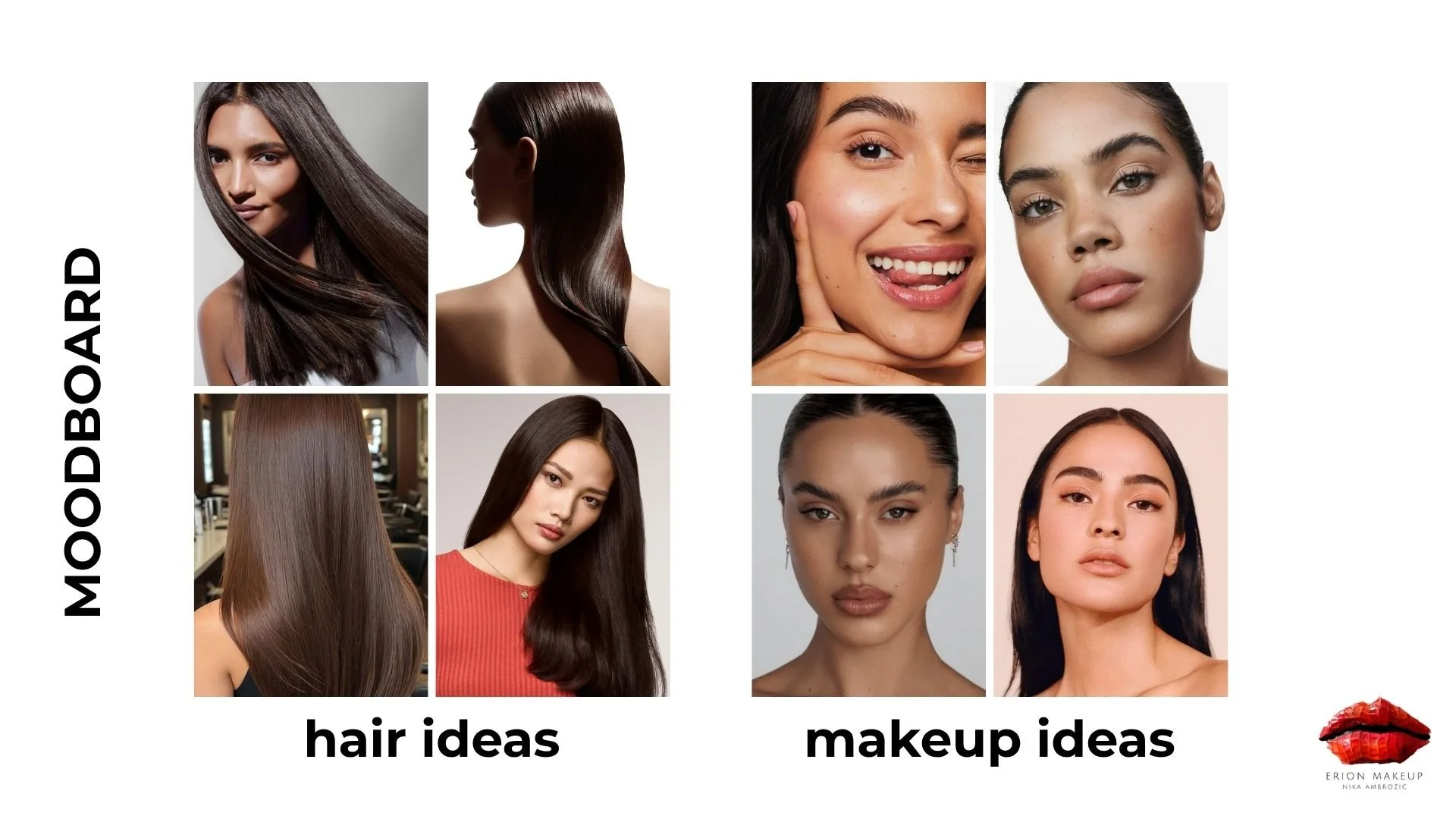Beauty is a visual art that is often hard to explain just with words. We need visual references or miscommunication happens quite easily which makes the actual photoshoot / videoshoot much more complicated.
Finding the right style
The most common description I receive from the initial job request for when I work as a makeup artist and hairstylist for commercial projects in Barcelona is “we want the makeup and hair to look natural”, to which I always respond: “Well, what does natural mean to you?”
The term “natural” is tricky because what looks natural to someone, may not look natural to someone else. We are conditioned by our cultures, our personal beauty standards and for companies, the market they are trying to target. Working in Barcelona, we got a lot of “service" jobs” which means that clients from all over the world come here to create their commercial campaigns. This means that my clients can be from China, the USA, the UK or France and those cultures have very unique views on natural beauty. Our beauty standards and expectations are different in each of these countries, which means that “natural” just isn’t descriptive enough to create a good inspiration board for the makeup and hair look.
Beauty isn’t one size fits all
This process of trying to find the perfect makeup and hair look for the brand’s vision is also extremely challenging if not impossible, when we don’t know who the model will be. Once we’ve defined what natural looks like for this particular client, we need to see who the chosen model is in order to adapt the makeup and hair style to that person’s unique look.
Once all that information is available, it’s time to create a moodboard. But who’s job is it?
Modern challenges
I’m not a fan of the client sending me a pre-made moodboard, because unfortunately lately, these documents are full of AI generated content, which creates unrealistic expectations from not just the beauty team, but the whole production team. Finding real people, with real hair and makeup styles is a bit of a craft that takes time to hone and in 2025, it’s a highly necessary skill.
Working together
This is why creating a moodboard in collaboration with your makeup and hair artist is so important. My preparation process for commercial campaigns usually involves a conversation with the client, to better understand their view but also to contextualize the campaign. Where will it be used? Who is the brand’s target customer? Will we be filming or photographing the look? Both?
Once I better understand what they’re looking for, I create a preliminary makeup and hair moodboard, so they have visual options to chose from. Once they’ve seen the options, we can tweak and change things to create a definitive moodboard which serve us as a base for our Barcelona shoot.
Make the best of your shoot with good prep
The preparation of a makeup and hair moodboard is crucial to the communication between the makeup and hair artist and the client, so you should never skip it. The time invested before the day of the campaign will help you on the actual day for things to go smoother and faster.



